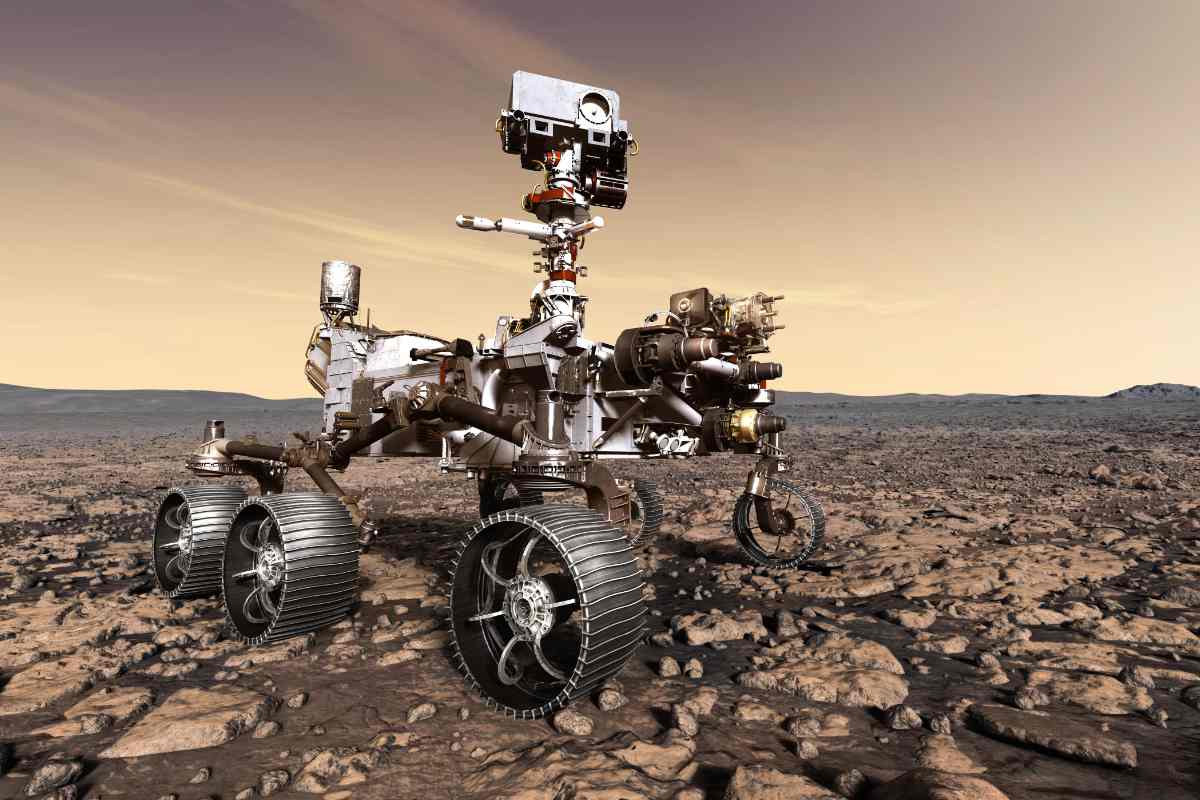And that also tells us a lot more about the atmosphere of the red planet.
Mars rover Perseverance has been researching our red, dusty neighboring planet for at least eight months. To do this as well as possible, the six-wheeled cart is equipped with various ingenious instruments. For example, the rover has two microphones, which add a new dimension to the way scientists explore the red planet. Meanwhile, the microphones have already been deployed several times. And it turns out that surprisingly there is much more to hear than expected.
Microphones
Perseverance has already captured a lot of ambient sounds with its microphones. For example, nearly five hours of gusts of wind have been taped, we’ve heard rover wheels crunch across gravel, and the engines hum as Perseverance moves his robotic arm.
Meanwhile, Perseverance’s “playlist” on the red planet is steadily growing. While the rover was on its way to Mars, he made his first sound recordings. Then the rover, after landing in the Jezero crater, some ambient sounds on. For example, we could already hear the wind blowing on Mars for a while and the microphones recorded mechanical sounds from the rover. Then Perseverance revealed – perhaps more excitingly – what his alien hunt sounds like. Because the SuperCam – an instrument that can make images and sound recordings, but also detect the presence of organic substances in rocks – unmistakably picked up the fast, ticking sound of laser beams. We were also able to listen what a ride on Mars sounds like. And that doesn’t come easy.-
These sounds allow scientists and engineers to experience the red planet in a new way – and everyone is invited to listen in. “It looks like you’re standing there yourself,” says researcher Baptiste Chide. “Mars sounds have strong bass vibrations, so if you put on headphones you can really feel it.”
Atmosphere
Among other things, the microphones are used to study how sound travels on Mars. And that also tells us a lot more about the atmosphere of the red planet. Sound travels through vibrations in the air. Such research is quite interesting. The Martian atmosphere has a different composition than that of the Earth. For example, the atmosphere of Mars consists mainly of carbon dioxide, while ours mainly contains nitrogen and oxygen. It means that the higher frequencies on Mars are less audible than the lower tones. In addition, it is a lot colder on the red planet. Due to this colder atmosphere, sound waves reach the microphones just a little more slowly.
More than expected
But now the researchers have come to the happy discovery that there is actually much more to hear on Mars than previously thought. For example, scientists were quite surprised when the microphones picked up the buzzing rotors of the Ingenuity helicopter during its fourth flight. This allowed researchers to cross out two of the three models developed that explain how sound travels on Mars. “Sound on Mars travels much further than we thought,” said researcher Nina Lanza. “This highlights the importance of doing fieldwork.”
“Sound on Mars travels much further than we thought”
Maintenance
Incidentally, the ability to record sounds is not only relevant for research on the red planet. It may also come in handy in maintaining future spacecraft. Cameras are currently often used to monitor, for example, wheel wear on Mars rover Curiosity or the dust that accumulates on Marslander Insight’s solar panels. But microphones can also reveal all sorts of things about the health of spacecraft, similar to mechanics listening to a car’s engine to diagnose a problem.
The Perseverance team doesn’t just use the microphones the rover is equipped with to learn more about the red planet. The microphones are positioned so that scientists can also listen to the wheels and other internal systems. While not enough recordings have been made to detect any changes, the intention is that technicians will eventually be able to hear subtle differences. This will then make an important contribution to how the research team monitors the health of the spacecraft. “We would like to listen to these sounds regularly,” said researcher Vandi Verma. “After all, we also regularly listen for changes in sound patterns on our test rovers here on Earth, which may indicate that there is a problem that needs attention.”
–


